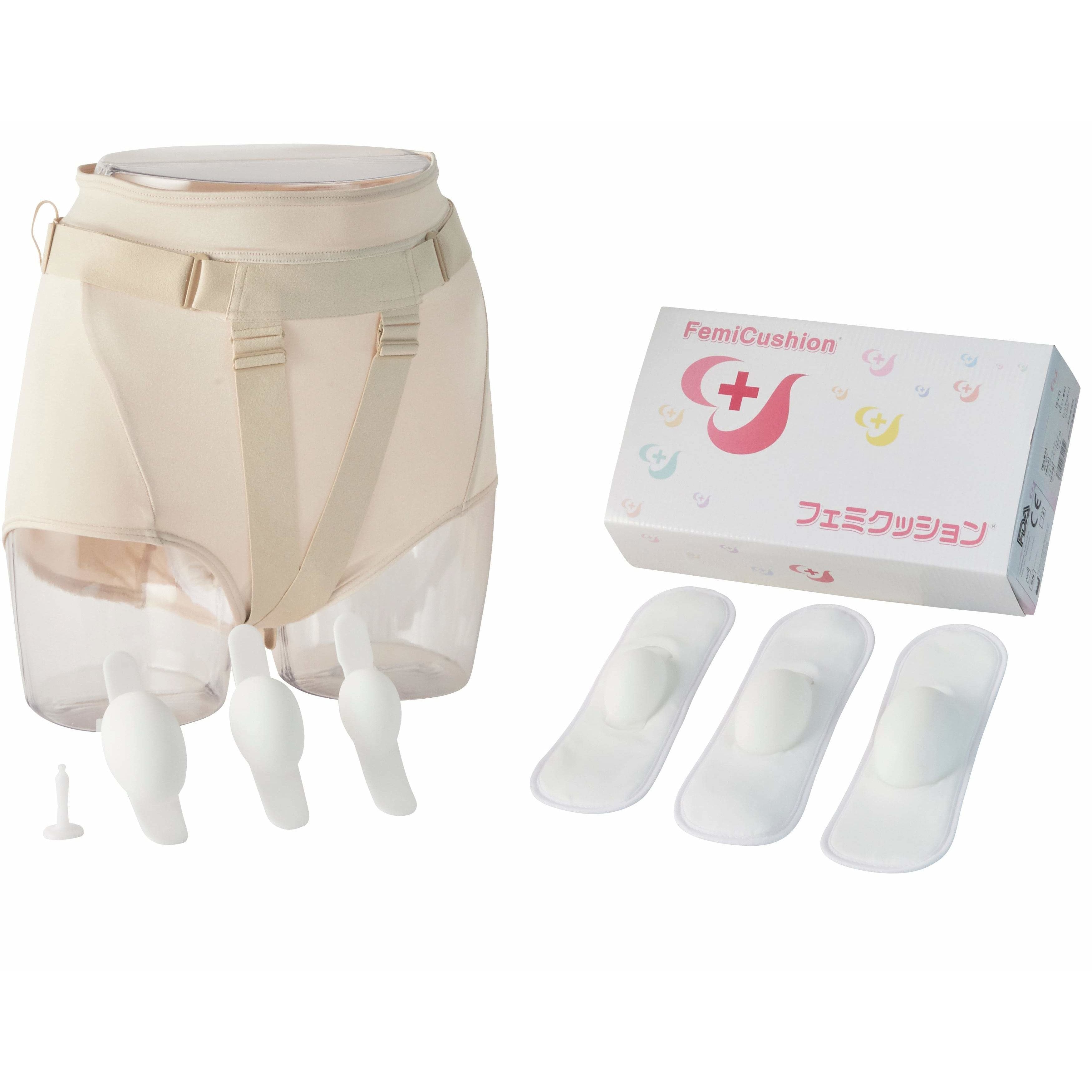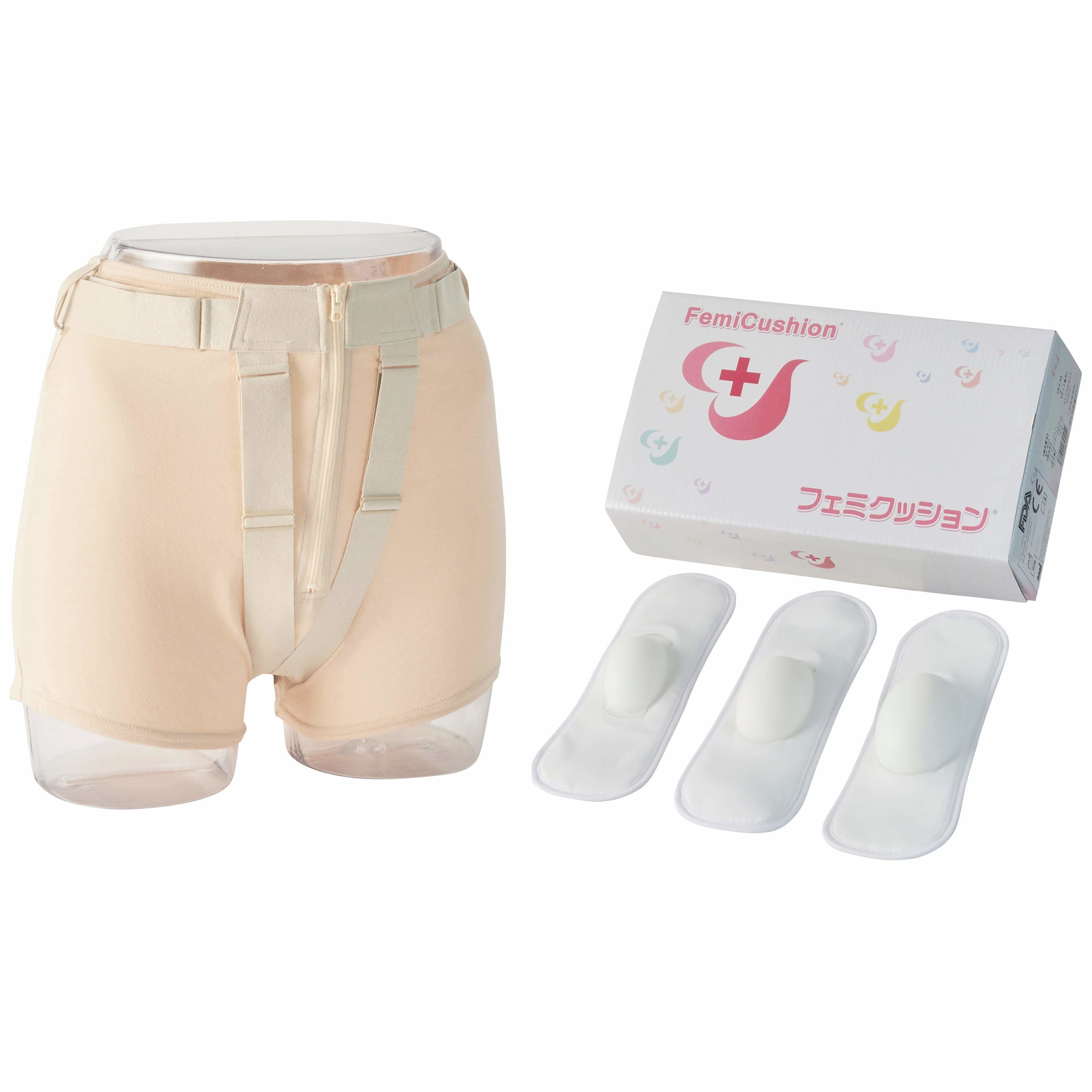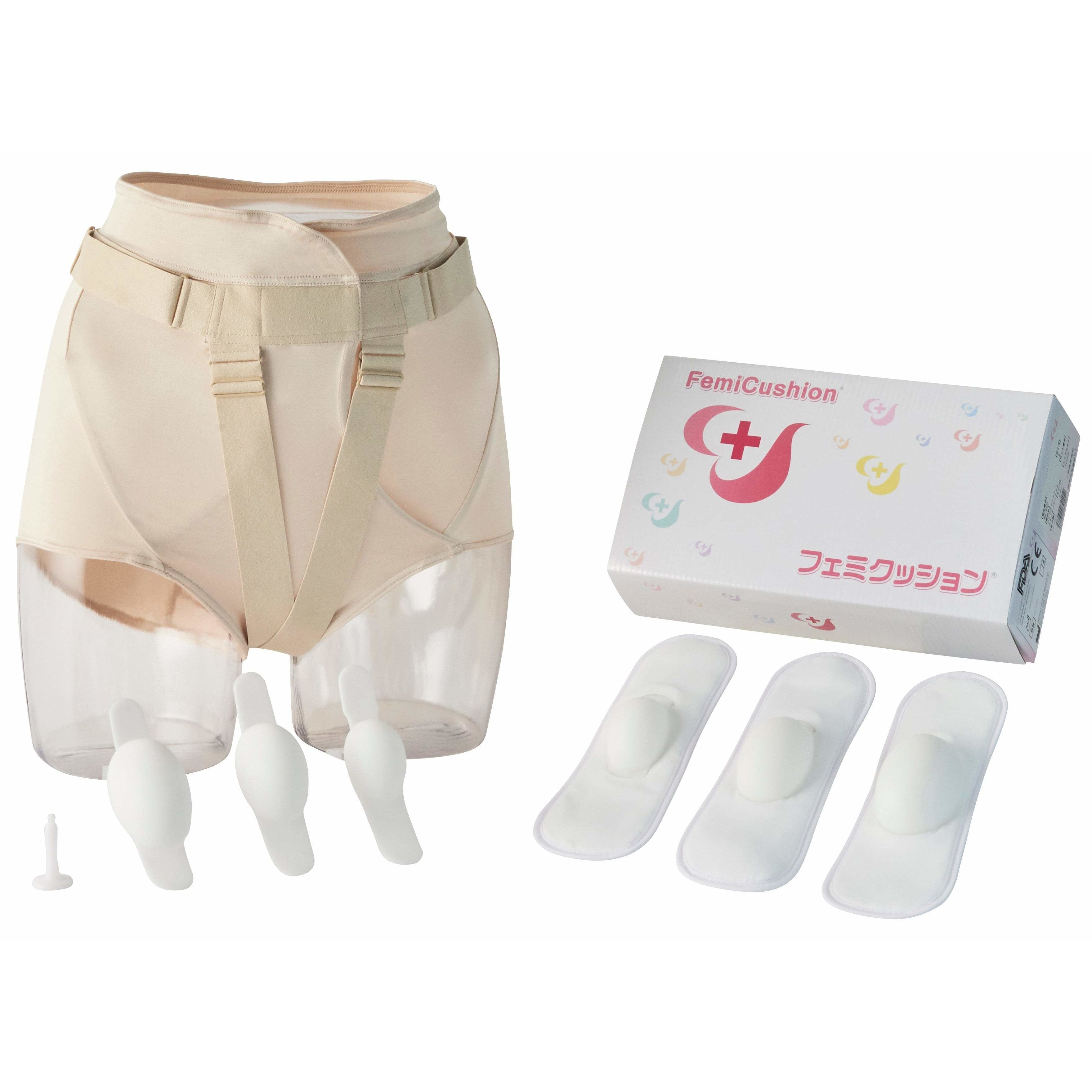How to Prevent Pelvic Organ Prolapse Without Surgery or a Hospital
Summary
Table of Contents

Numerous women experience pelvic organ prolapse, which can be uncomfortable and embarrassing. When the bladder, uterus, or rectum slip out of position into the vaginal canal, it is known as pelvic organ prolapse. There are a number of steps you can take to help avoid and manage pelvic organ prolapse without having a treatment or traveling to the hospital, even though surgery may occasionally be required to address it.
What is Pelvic Organ Prolapse?
A condition known as pelvic organ prolapse occurs when one or more of the pelvic organs moves from its healthy position position and into the vagina. This may result in pressure, pain, and discomfort in the pelvic area. Prolapse may even be evident outside the body in advanced stages.
Pelvic organ prolapse can take several various forms, each of which affects a different organ in the pelvic floor. Cystocele, which happens when the bladder protrudes into the vagina, is the most typical form. Other kinds include uterine prolapse, in which the uterus protrudes into the vagina, and rectocele, in which the rectum bulges into the vagina.
Causes of Pelvic Organ Prolapse:
- Menopause and aging: As women get older, the pelvic muscles and tissues may deteriorate, increasing their risk of prolapse. Pelvic organ prolapse may also be influenced by the hormonal changes that take place during menopause.
- Pregnancy and childbirth: Pregnancy and childbirth can damage muscles and tissues in the pelvic floor, increasing a woman's risk of prolapse. Childbirth stress can be especially harmful, especially if a vaginal delivery is involved.
- Obesity: Being overweight or obese can put additional strain on the pelvic area.
- Constipation or persistent coughing: These conditions can increase pressure in the pelvic area and cause a prolapse to form.
- Genetics: Some women may be more susceptible to pelvic organ prolapse due to genetic factors.
How to Prevent Pelvic Organ Prolapse
Even though there is no guaranteed method to prevent pelvic organ prolapse, there are several things you can do to lower your risk:
- Maintain a healthy weight: Doing so can help to relieve strain on your pelvic area and prevent prolapse. Women who are overweight are at a higher risk of developing pelvic organ prolapse.
- Exercise frequently: Maintaining a regular exercise schedule will assist to strengthen the pelvic muscles and lower your chance of getting prolapse.
- Pelvic Floor Exercises (Kegel Exercises): Performing Kegel exercises are shown effective to improve the strength of the pelvic floor.
- Avoid heavy lifting: If you have a history of pelvic organ prolapse, you should avoid heavy lifting. Lifting heavy objects can put pressure and strain on the pelvic floor.
- Take care of your posture: Good posture can help to ease pelvic tension and prevent prolapse.
- Prevent constipation: Constipation can contribute to the development of prolapse through straining. This can be prevented by drinking lots of water and eating fibrous foods to maintain regular bowel movements.
- Quit smoking: Studies show that chronic smokers are linked to decrease muscles mass. They are also at a higher risk of developing chronic cough which puts pressure on the pelvic floor.
Pelvic Floor Muscle Exercise Methods
In addition to these preventative measures, practicing pelvic floor muscle exercises can also help to prevent pelvic organ prolapse. Pelvic floor muscle exercises are one of the most efficient approaches to cure and prevent pelvic organ prolapse. By strengthening the muscles that support the pelvic organs, these exercises can lower the chance of prolapse and alleviate its symptoms in the event that it has already happened.
A popular and straightforward pelvic floor exercise is the kegel exercise. Simply squeeze and release the muscles that you employ to halt urinating to execute a Kegel. Continue doing this repeatedly until you can hold the pressure for 10 seconds and then let it go for 10 seconds. This can be done several times a day.
Pelvic tilts, which can realign the pelvis and relieve strain on the pelvic floor, are another useful exercise. Lie on your back with your legs bent and your feet flat on the floor to conduct a pelvic tilt. For a few seconds, tilt your pelvis up then lower it. Work your way up to 10 repetitions per session as you repeat this numerous times.
Including posture-supporting workouts in your program, such yoga or Pilates, is also beneficial. The risk of prolapse can be decreased by maintaining good posture, which helps to lessen pressure on the pelvic floor.
Things to Keep in Mind for Daily Life with Pelvic Organ Prolapse
In addition to exercises, various lifestyle changes can aid in the management and prevention of pelvic organ prolapse. Here are some suggestions to bear in mind:
Maintaining a healthy weight with a balanced diet and regular exercise is crucial because being overweight or obese might raise the risk of prolapse.
Avoid heavy lifting: Lifting heavy objects should be avoided whenever feasible because it can add to the pelvic floor's tension. If you must lift something heavy, make sure you do so safely and with the right form.
Adopt good posture: It's vital to pay attention to your posture throughout the day as it can help to lessen pressure on the pelvic floor. This can involve using a chair with appropriate lumbar support, keeping your feet firmly on the floor, and refraining from slouching.
Quit smoking: Smoking can weaken the pelvic floor muscles, making prolapse more difficult to control and prevent. The first step in maintaining healthy pelvic health is to stop smoking.
Think about pelvic health physical therapy: A physical therapist with a focus on pelvic health can assist you in creating a customized exercise program and offer advice on modifying your lifestyle to help avoid or treat prolapse.
My Prolapse Does Not Require Surgery but I Am Still Concerned
It is reasonable to feel worried if you have been diagnosed with pelvic organ prolapse but do not need surgery. There are, however, numerous efficient non-surgical management options for the illness.
It's crucial to collaborate with your healthcare practitioner to create a thorough strategy that takes into account your individual requirements and symptoms. Exercises for the pelvic floor muscles, dietary changes, and physical treatment for pelvic health may all be part of this.
Additionally, it's crucial to stick with your management strategy with patience and tenacity. Pelvic organ prolapse can be a chronic illness, but it is possible to lessen symptoms and enhance overall pelvic health by choosing the correct exercises and lifestyle changes.
In conclusion, the quality of life can be significantly impacted by the prevalent condition known as pelvic organ prolapse. Without surgery or a hospital stay, the condition can be avoided and managed. Exercises for the pelvic floor muscles, keeping a healthy weight, adopting excellent posture, and quitting smoking can all have a significant impact.
FemiCushion and Clinical Study Outcomes
FemiCushion offers a non-surgical remedy for uterine, bladder, rectocele, and enterocele prolapse. It features a soft silicone cushion for direct support, a secure holder to manage urine leakage, and an adjustable supporter. FemiCushion is an easy to use external support device. It effectively prevents organ protrusion, providing comfortable support and is an excellent alternative for individuals uncomfortable with pessaries or surgery.
Showa University Northern Yokohama Hospital conducted a study published in The Journal of Obstetrics and Gynecology Research, utilizing magnetic resonance imaging (MRI) to assess pelvic organ changes with FemiCushion. Twelve participants, aged 56 to 84, with severe pelvic organ prolapse (POP), demonstrated FemiCushion's efficacy in repositioning organs. Results showed comparable effectiveness to pessaries without associated risks like vaginal erosion. Notably, FemiCushion not only lifts prolapsed organs but also supports the perineal body. Severe POP patients experienced a significant reduction in prolapse, with potential improvement after a month of use.
The University of Campinas in São Paulo, Brazil, conducted an independent study on FemiCushion, published in the Pelviperineology journal. Women aged 60 to 79 consistently using FemiCushion for three months showed effective results with a lower risk of complications compared to pessaries. The external placement and daily removal for hygiene purposes contributed to reducing infection risks. Significant improvements were observed in symptoms such as lower abdominal pain, pelvic bulge sensation, and visible lumps outside the vagina. Overall, the research concluded that FemiCushion is a viable and effective option for managing pelvic organ prolapse symptoms and enhancing quality of life.
At the 18th Annual Fall Scientific Meeting in October 2017, the Sexual Medicine Society of North America presented findings from an independent study on dermal tissue transplantation for pelvic organ prolapse. FemiCushion used post-surgery, aided recovery and improved the quality of life for patients. The study suggested that incorporating FemiCushion, an external pessary, preoperatively and postoperatively, could enhance patient quality of life, especially in cases involving sexual dysfunction associated with vaginal pessary use.
Supervising Doctor of This Article

Koichi Nagao, MD PhD
Professor, Department of Urology, Toho University Faculty of Medicine
Director of Urinary tract reconstruction center, Toho University Omori Medical Center
Director of Reproduction Center, Toho University Omori Medical Center
Professor Nagao specializes in plastic surgery in the field of reproductive medicine. He completed eight years of plastic surgery training at Showa University before majoring in urology at Toho University. With his meticulous surgical techniques and careful examinations that combines urology and plastic surgery, Professor Nagao became a Board Certified Specialist with multiple associations including the Japanese Urological Association, the Japan Society for Reproductive Medicine, and the Japanese Society for Sexual Medicine.
The suggested Products

مجموعة أدوات Deluxe Standard Deluxe Kit
$299.99

مجموعة أدوات FemiCuslion Lite
$249.99

مجموعة FemiCushion EasyOpen Deluxe
$299.99
